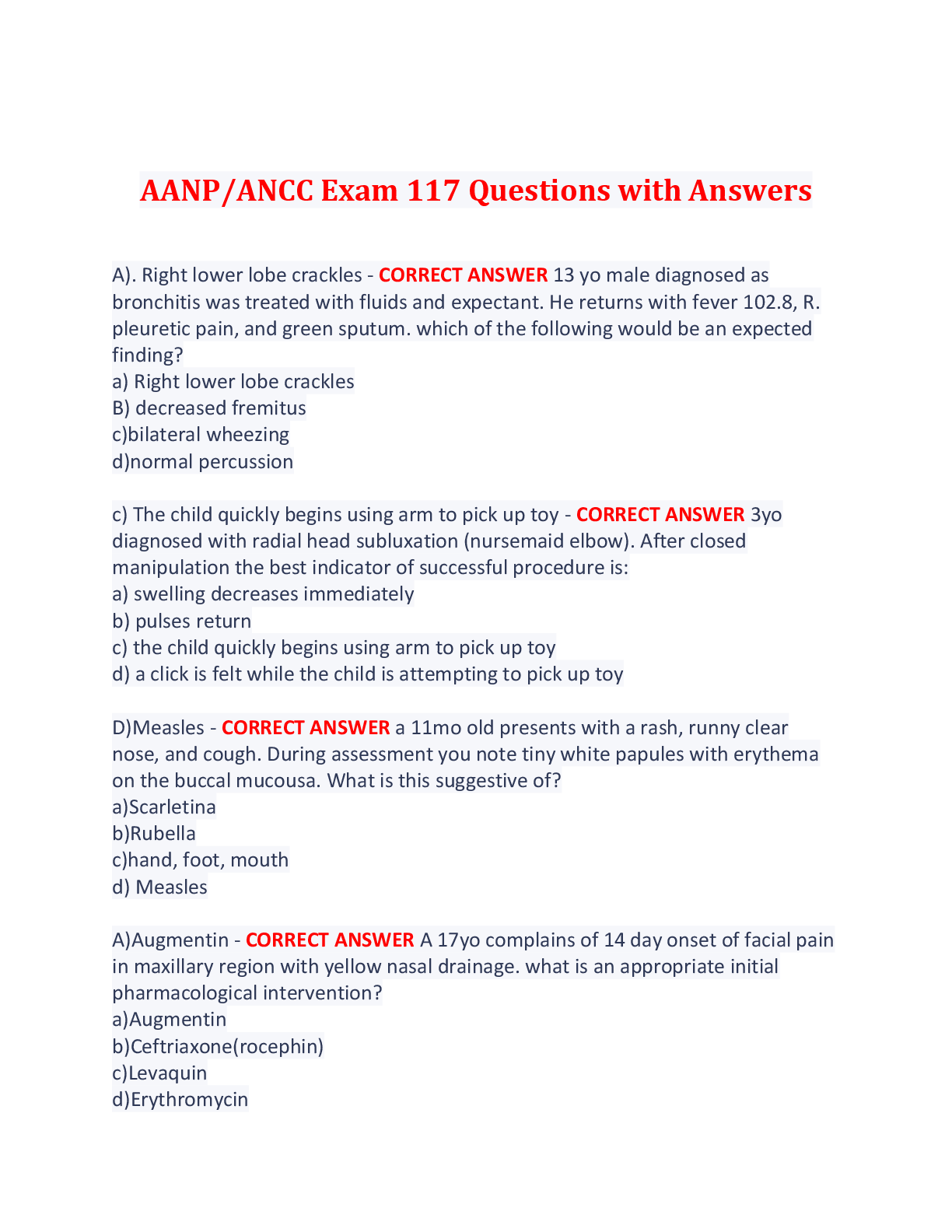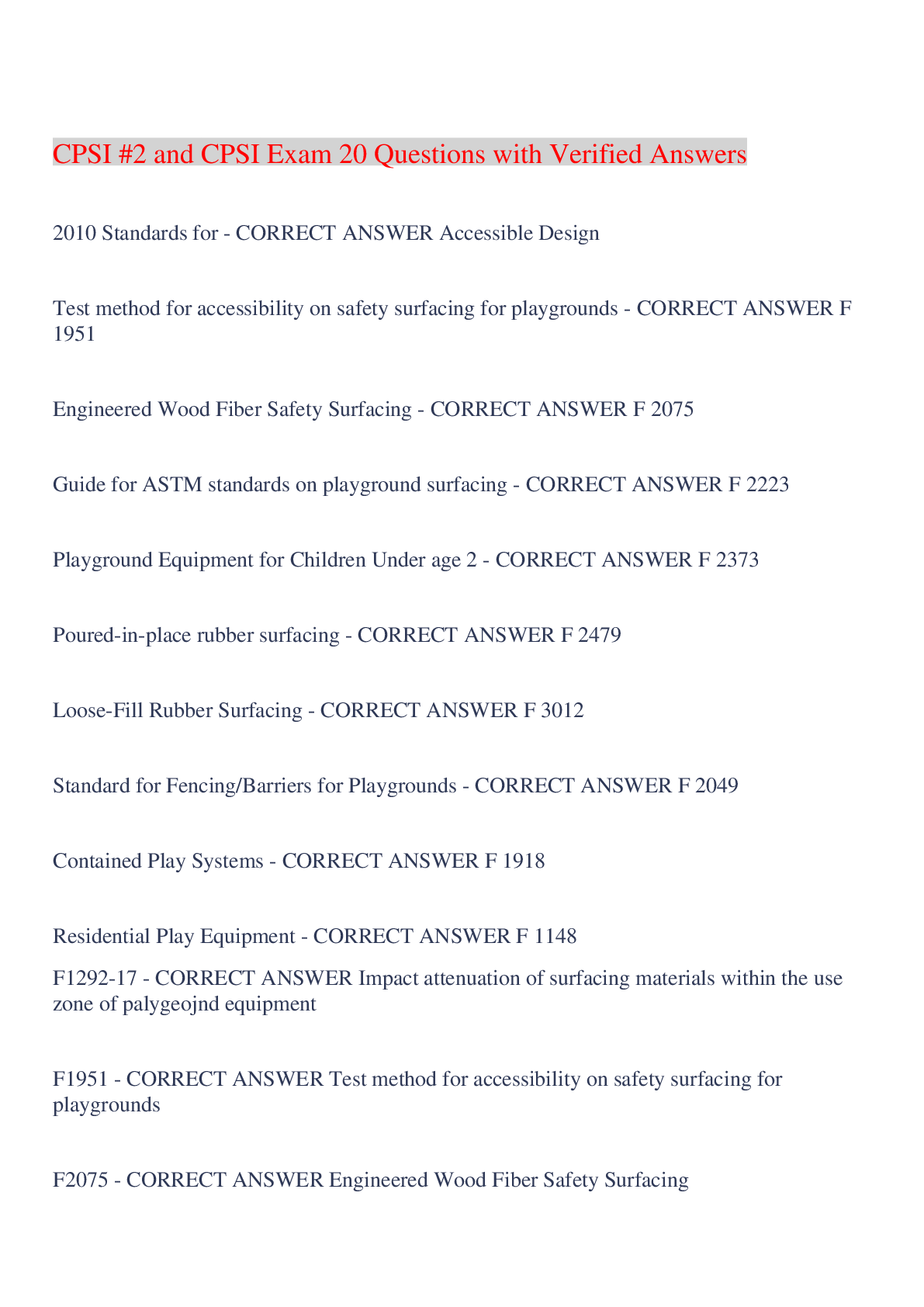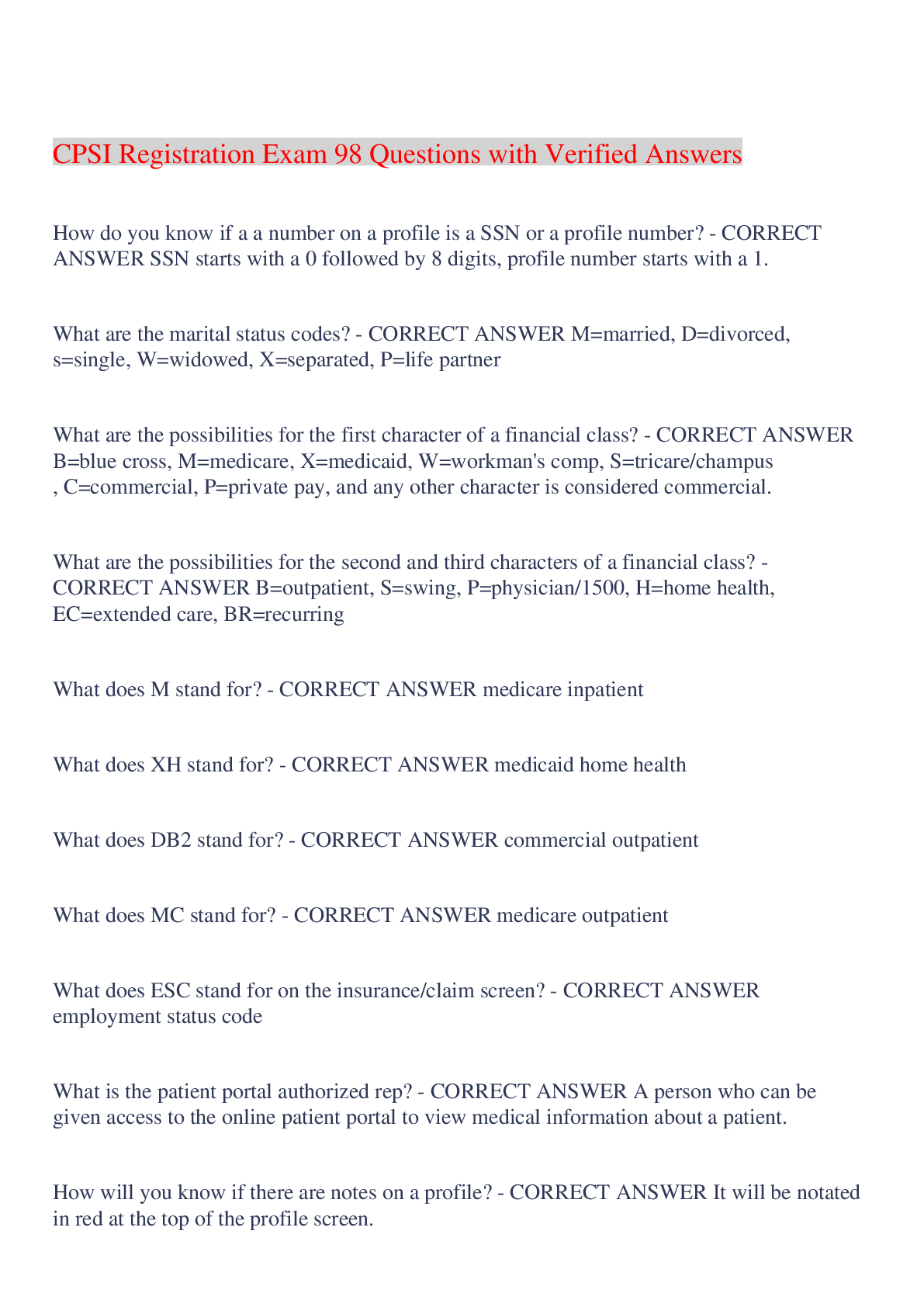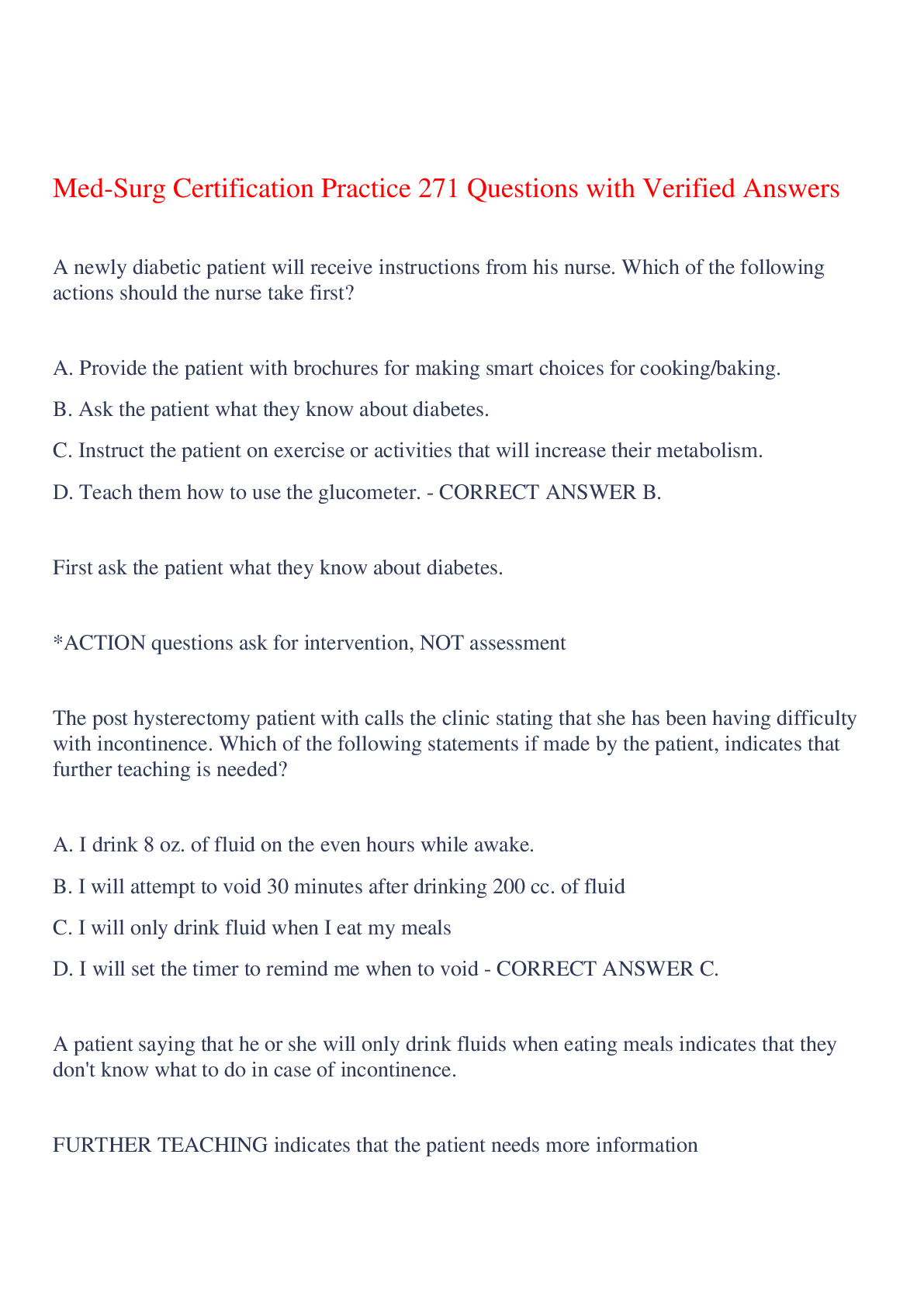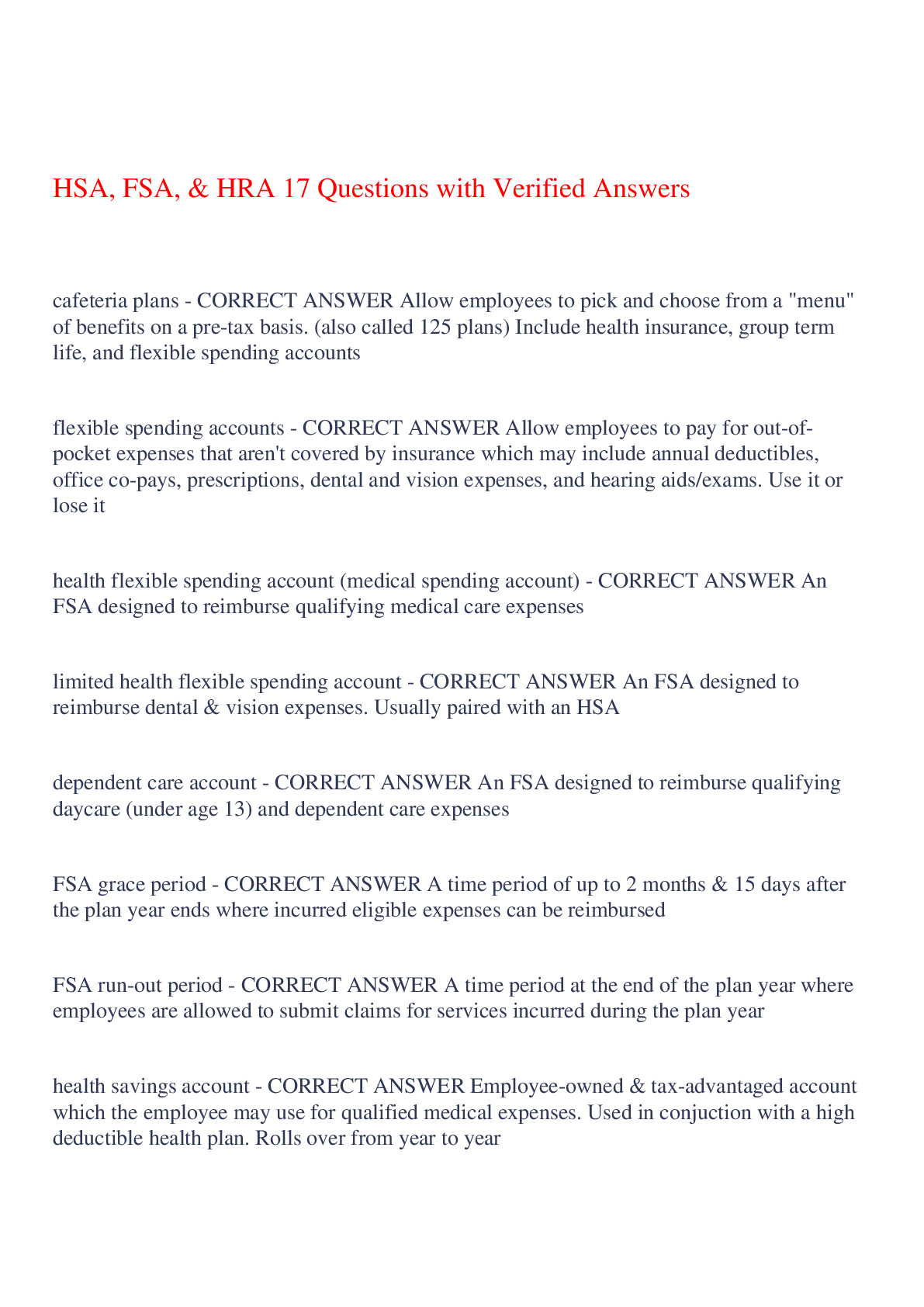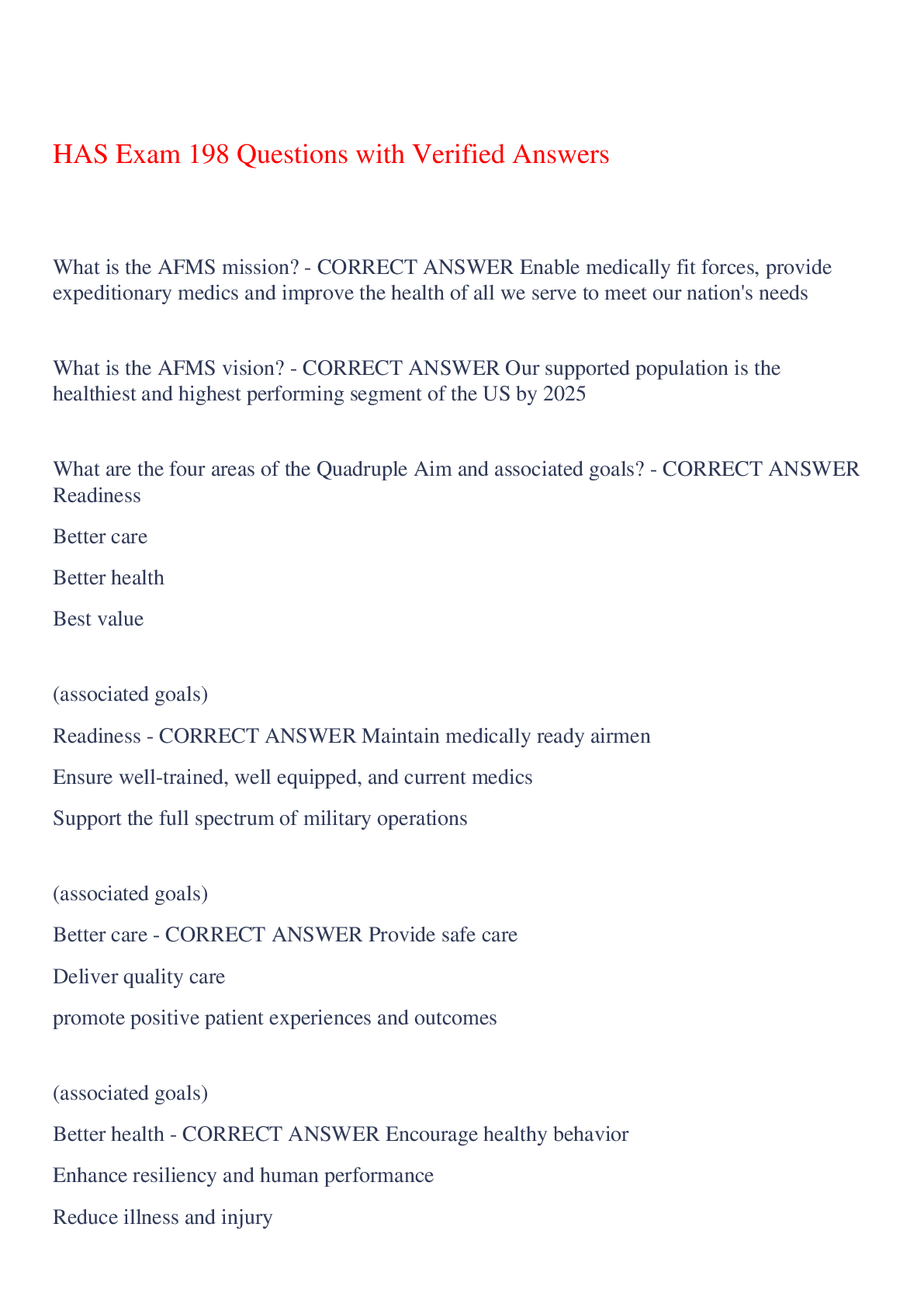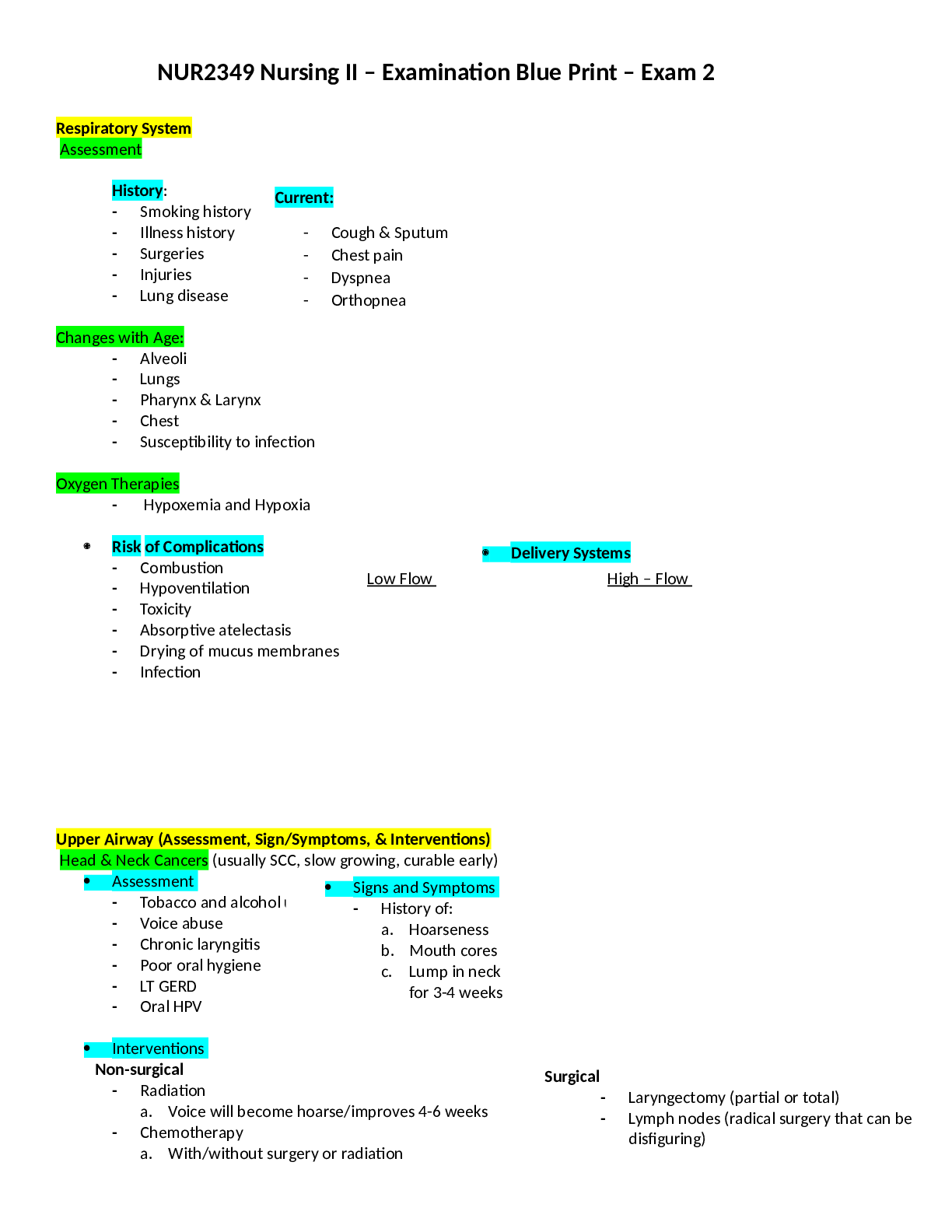NUR 2502 MDC III – Examination Blue Print – Exam 2 LATEST 2021,100% CORRECT
Document Content and Description Below
NUR 2502 MDC III – Examination Blue Print – Exam 2 LATEST 2021 Disorders to Review: ● Head/sinus/neck cancer o Squamous cell carcinoma and slow growing ▪ treatable at early stage ▪ Be... gins with mucosa that is chronically irritated, becoming tougher than thicker ▪ Leukoplakia (white patchy) and erythroplakia (red,velvety) lesions ▪ Risk factors: tobacco and alcohol use ● voice abuse, chronic laryngitis, exposure to chemical or dusts, poor oral hygiene, long- term GERD, and oral HPV o Clinical manifestations ▪ lumps in mouth, throat, neck ▪ Difficulty swallowing ▪ color changes in mouth or tongue ▪ Oral lesion or sore that does not heal in 2 weeks. ▪ Persistent, unilateral ear pain ▪ persistent/unexplained oral bleeding ▪ Numbness or mouth, lips, or face ▪ Change in fit of dentures ▪ hoarseness or change in voice quality ▪ persistent/recurrent sore throat ▪ shortness of breath ▪ anorexia and weight loss ▪ burning sensation when drinking citrus or hot liquids o Nursing interventions ▪ psychosocial-assess support systems and coping mechanisms ▪ laboratory assessment ● CBC, urinalysis, blood chemistries, kidney and liver function tests, HPV ▪ Imaging assessment ● x rays, CT, mri ▪ other diagnostic ● laryngoscopy, biopsy ▪ the priority interprofessional collaborative problems for patients with head and neck cancer include ● potential for airway obstruction ● potential for aspiration ● Anxiety ● decreased self esteem o Therapies ▪ radiation therapy ▪ chemotherapy ▪ cordectomy ▪ laryngectomy ● post op care for laryngectomy o FIRST! airway maintenance and gas exchange o wound, flap, reconstructive tissue care o hemorrhage o wound breakdown o pain management o nutrition o speech and language habilitation ● Nasal/Facial fracture o Clinical manifestations ▪ displacement of bone or cartilage can cause airway obstruction of cosmetic deformity; potential source if infection ▪ CSF may indicate skull fracture o Nursing interventions ▪ nasal reduction ▪ rhinoplasty ● observe for edema and bleeding ● check vital signs every 4 hours ● semi-fowler’s position ● cool compress to reduce swelling ● Limit valsalva- don't sniff upward or blow nose, laxatives or stool softeners to ease bowel movements ● avoid aspirin and NSAIDs ● edema and bruising last for weeks ▪ nasal-septoplasty ● Epistaxis o Clinical manifestations ▪ nosebleed is a common problem ▪ cauterization of affected capillaries may be needed nose is packed o Nursing interventions ▪ assess for respiratory distress, tolerance of packing or tubes ▪ humidification, oxygen, bedrest, antibiotics, pain medications ● COPD o Clinical manifestations ▪ may be absent in early phases ▪ May vary depending on underlying disease process ▪ Hypoxia ▪ barrel chest ▪ Cyanosis ▪ Clubbing ▪ Cough/ sputum production ▪ Dyspnea ▪ Lung sounds-hyper-resonany to percussion, wheezes/crackles ▪ Tripod position: In tripod position, one sits or stands leaning forward and supporting the upper body with hands on the knees or on another surface ▪ Weight loss ▪ Fatigue ▪ Anxiety o Complications: ▪ Hypoxemia/tissue anoxia ▪ Acidosis ● Increased CO2 ● Decreased PO2 ● Decreased pH ▪ Respiratory infections ● Due to increased mucus ▪ Heart failure/dysrhythmias ▪ respiratory failure o Nursing interventions ▪ GOAL: improve airflow and prevent progression ● Support with coping, teaching pt to be a partner in COPD management ● CONTROLLED oxygen therapy o Maintain SpO2 of 88% ● Educate on the cessation of smoking ● Pulmonary rehab ● educate on diaphragmatic breathing, pursed-lip breathing. ● Elevate HOB ● Ventilator support if needed ● nutrition-weight loss, low sodium diet ● Hydration-may thin secretions ● Surgery-rare ▪ Drug therapy ● Beta-adrenergic agents o albuterol ● Anticholinergics o Atrovent, Spiriva ● Methylxanthines o Theophylline ● Corticosteroids o Short course treatment ● NSAIDS ● Mucolytics ● Sleep apnea o Clinical manifestations ▪ Persistent daytime sleepiness ▪ waking up tired ▪ snoring ▪ tiredness ▪ history of high blood pressure ▪ Obesity ▪ neck circumference >40cm o Nursing interventions ▪ noninvasive positive-pressure ventilation (NPPV) ▪ Bilevel positive airway pressure (Bipap) ▪ Auto Titrating positive airway clearance (APAP) ▪ Nasal continuous positive airway pressure (CPAP) ▪ Adenoidectomy- removes excess tissue ▪ Uvulectomy- a small part of the uvula is removed. ▪ Uvulopalatopharyngoplasty (UPPP) done for those with enlarged tissues- remodels posterior oropharynx ▪ tracheostomy- baypasses obstruction. done for those with severe OSA or those who cannot tolerate the CPAP. ● Asthma o Clinical manifestations ▪ dyspnea ▪ Use of accessory muscles ▪ diaphoresis ▪ tachycardia ▪ tachypnea ▪ Wheezing ▪ Diminished breath sounds ▪ Cyanosis ▪ confusion o Nursing interventions ▪ assess history: hx of allergic reactions to meds ▪ assess respiratory status: monitoring the severity of symptoms ▪ Assess medications: identify what the pt is currently taking ▪ pharmacologic therapy: administer and watch ▪ fluid therapy: administer fluids if dehydrated. ▪ avoid triggers ▪ reduce stress ▪ oxygen therapy ▪ regular exercise ● Cystic Fibrosis o Clinical manifestations ▪ wheezing ▪ dyspnea ▪ tachypnea ▪ barrel chest ▪ distended abdomen ▪ crackles ▪ clubbing of the fingers and toes ▪ Drying, nonproductive cough ▪ Foul-smelling pale stool with high fat content (steatorrhea) ▪ Hematemesis ▪ Poor growth o Nursing interventions ▪ nutrition management ● positive expiratory pressure ● chest physiotherapy ● medications ● oxygen therapy ● oxygen therapy ● lung transplant. ● Pulmonary Hypertension o Clinical manifestations ▪ dyspnea ▪ fatigue ▪ angina ▪ lightheadedness ▪ edema ▪ jugular vein distention ▪ without treatment- dead within 2 years ▪ blood vessel constriction with increasing vascular resistance in the lung o Nursing interventions ▪ Drug therapy ● warfarin therapy ● Calcium channel blockers (lower blood pressure) ● Endothelin- receptor antagonists (causes vasodilation) ● natural and synthetic prostacyclin agents ● Digoxin and diuretics ● Oxygen therapy ▪ Surgical management ● lung transplant ● If cor pulmonale also present- may need heart and lung transplant. ● Lung cancer o S/Sx: Hoarseness, Change in the respiratory pattern, Persistent cough or change in cough, Blood streaked sputum, Rust-colored or purulent sputum, Frank hemoptysis (grossly blood sputum, but low volume), Chest pain/tightness, Shoulder, arm, or chest wall pain, Recurring episodes of pleural effusion (fluid in the lungs), pneumonia, or bronchitis, Dyspnea, Fever associated with one or two other signs, Wheezing, Weight loss, Clubbing of the fingers o Nursing interventions ▪ Chemotherapy ● usually treatment of choice ▪ Targeted therapy ▪ Radiation therapy ▪ Photodynamic therapy ● uses light to find cancerous cells and then damages cancers cells ▪ Lobestomy ▪ Pneumonectomy ▪ segmentectomy ▪ wedge resection ▪ post-op care ● chest tube ● respiratory assessments ● Tuberculosis o clinical manifestation ▪ chronic infection of the lung caused by mycobacterium results in tubercles ▪ Tubercles: nodules or swelling of lymphocytes and epithelial cells that form lesions in lung tissue ▪ Assessment: (symptoms are often vague) ● 2+ weeks of cough, fever or weight loss ● weight loss over 3lbs/wk is considered significant ● night sweats, weakness, and child may be present with hemoptysis when the infection has progressed ▪ Diagnostic tests ● PPD or mantoux skin testing. results are read in 48-72ish hours ● Chest x ray ● sputum culture ● NAAT ● Influenza o Clinical manifestations ▪ highly contagious acute viral respiratory infection ▪ Strains A, B, and C ▪ Rapid onset ▪ Severe headache, muscle aches, fever, child fatigue, weakness, anorexia. ● Type B can lead to N/V/D ▪ Can lead to pneumonia o nursing interventions ▪ rest, increase fluid intake, salt water gargles, antihistamines ● Peritonsillar abscess o Clinical manifestations ▪ complication of acute tonsillitis-spreads to surrounding tissue and causes abscess ▪ Pus behind tonsil causing one-sided swelling with deviation of the uvula ▪ trismus and difficulty breathing ▪ Pain radiating to teeth or ear, muffled voice, difficulty swallowing ▪ bad breath, swollen lymph nodes o nursing considerations ▪ percutaneous needle aspiration of abscess ▪ antibiotics. ● Pneumonia o clinical assessments ▪ fever, chills/rigors, sweats ▪ Cough with or without sputum ▪ pleuritic chest pain/weakness ▪ dyspnea ▪ fatigue ▪ headaches ▪ anorexia ▪ RR> 20, O2 may be needed, HR increased ▪ Lung sounds: crackles auscultated, wheezing. ▪ What is the most common symptom in the older adult? ● CONFUSION o nursing interventions ▪ improve gas exchange ● oxygen therapy, incentive spirometry ▪ Prevent airway obstruction ● cough, deep breath, increased fluid intake, bronchodilators, steroids, mucinex ▪ prevent sepsis ● abx ▪ prevent/manage empyema ● thoracentesis, chest tube, abx **Be sure to review Clinical Manifestations and Nursing Interventions for each disorder** Additional things to know ● For each of the above disorders/diseases, what are priority concerns? Medications: (Common/generic names, Therapeutic Effect, Side effects, Nursing Considerations) Drug Class: Bronchodilators – beta2 agonists ● Monitor patient response to the drug (improved airflow, ease of respirations, improved breathing). ● Monitor for adverse effects (CNS effects, increased pulse or blood pressure, GI upset, dry skin, and mucous membranes). SABA- short acting beta agonist -ALBUTEROL LABA- long acting beta agonist salmeterol and formoterol Drug Class: Corticosteroids – inhaled fluticasone (Flovent), budesonide (Pulmicort) Drug Class: : Leukotriene modifiers When would we use this drug? - sometimes used to treat COPD; montelukast sodium and zileuton. these block chemicals that cause the airways to narrow and tighten Drug Class: Bronchodilators- Cholinergic Antagonists/anticholinergic/long- acting muscarinic antagonists Drug Class: What drug is associated with Pulmonary Hypertension?: Interferon alfa and sofosbuvir Drug Class: • Tiotropium (Spiriva), ipratropium (Atrovent) Laboratory Values : What is the normal range? What is expected with exacerbation of disease? ABG’s pH: 7.35-7.45 Partial pressure of oxygen (PaO2): 75 to 100 mmHg Partial pressure of carbon dioxide (PaCO2): 35-45 mmHg Bicarbonate (HCO3): 22-26 mEq/L Oxygen saturation (O2 Sat): 94-100% Hemoglobin for men: 13.5-17.5 women: 12.0-15.5 Laboratory Value Interpretation What do these lab values indicate or test for Nasal drainage - how do we test it and what do results mean? (hint, page 556 nose fractures) TB tests – screening vs diagnostic PFT’s – basics of what it measures Sputum Cultures ABG interpretation Sweat Chloride test ABG interpretation. [Show More]
Last updated: 2 years ago
Preview 1 out of 15 pages

Buy this document to get the full access instantly
Instant Download Access after purchase
Buy NowInstant download
We Accept:

Reviews( 0 )
$16.00
Can't find what you want? Try our AI powered Search
Document information
Connected school, study & course
About the document
Uploaded On
Feb 28, 2022
Number of pages
15
Written in
Additional information
This document has been written for:
Uploaded
Feb 28, 2022
Downloads
0
Views
73


